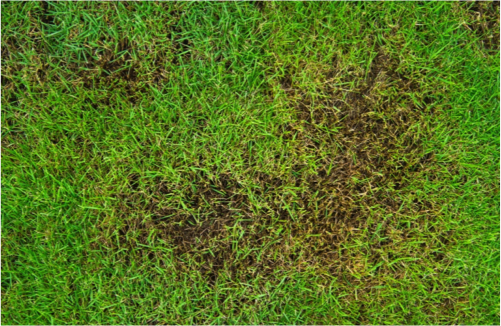It’s April, which means aside from the northernmost regions of the U.S., it is officially the warm season. Soon enough, your yard will be a-buzz with playing, partying and other glorious warm-weather activities.
Except, you have one problem: Your lawn is a mess. Drowning in leaf litter, strangled by weeds and patched all over in shades of brown, your lawn is not fit for the springtime company you imagined. Fortunately, there are ways to fix it – but first you need to know what’s going wrong.
Compacted Soil
During a long, cold winter, especially in areas where snow falls, soil tends to become dense and firm, which is terrible for grass. Months of crushing ice and snow, heedless foot traffic, and shoveling and raking tends to pack down the dirt, stifling your lawn’s roots and making regrowth all but impossible. You can know for sure that your soil is too compact if you notice:
•Thin, patchy and bare grass
•Water puddling after rain
•Layers of thatch thicker than one-half inch
•Difficulty driving screwdriver or pen into soil
Aeration is the only real solution for compacted soil. This requires loosening up the soil and adding the space and air your lawn needs. You can probably rent an aeration machine from your local hardware store, or you can purchase other aeration tools to have on hand every spring.
Fungus, Bugs and Other Pests
Your lawn is a vast living organism, and just like you or your pets, it can get sick with infection. During moist cold seasons, grass is extremely susceptible to disease and infestation. Often, you can identify fungus and pest swarms by how your lawn looks; here are some common maladies and symptoms:
•Pink snow mold: white and pink patches that feel slimy
•Stripe smut: stunted grass with lighter yellow and green hues
•Leaf spot: tiny, dark spots or large purple splotches
•Grubs: growing patches of brown grass, large population of June bugs or Japanese beetles
•Chinch bugs: growing region of yellow grass
•Mole crickets: spongey, dead grass in irregular shapes
There are a few DIY solutions for fungus and pests, but it takes hard work and determination to bring your lawn back to full health after one of these attacks. Ultimately, it is safer and easier to call residential lawn care specialists to tackle the problem for you.
Water Problems
Many homeowners harbor a misconception about lawns: that more water equals more growth. Yet, grass is perhaps the most finicky of outside plants, especially in the spring when it is just waking up. Typically, winters are exceedingly moist, which means your grass has been close to drowning for several months. As the warm weather begins, it is crucial that you give your lawn a chance to dry out and breathe before watering it more. Later in the spring, after the rainclouds dissipate and the air becomes drier and warmer, you should spend extra time and effort watering; but until then, giving your lawn extra drinks will only make it harder for it to grow green and lush.








